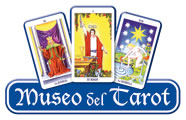Este mazo de cartas único basado en la tradición del "Juego de la Esperanza" y "Petit Lenormand", sin embargo, difiere en los matices de la historia, el número de cartas en el mazo y las peculiaridades en el trabajo con tiradas.
Por lo general, la baraja "Petit Lenormand" consta de 36 cartas con imágenes y símbolos de naipes que son comprensibles para todas las personas. Sin embargo, el nombre de la gran Sibila francesa fue tan popular que en el siglo XIX tanto los editores como los adivinos se apropiaron de su nombre para varios sistemas de adivinación que consistían en diferentes números de cartas.
Por ello, hemos decidido complementar el conjunto de 36 conocidos símbolos con otras 16 cartas extraídas de los Oráculos más famosos de Europa del siglo XIX. Puedes utilizar esta baraja para adivinación tanto en el set de 52 cartas para tiradas especiales como, al mismo tiempo, en el formato habitual de 36 cartas para tiradas conocidas.
Se utilizaron materiales iconográficos de la vida en Venecia en los siglos XVI-XVIII cuando se trabajaba en las cartas. La idea principal involucra las famosas máscaras venecianas que usan todos los personajes de la baraja. Esto permite apreciar la época y da libertad para la imaginación promoviendo la percepción multicapa.
Playing Cards 19th Century Gatteaux Paris Pattern se utilizó para la miniatura de naipes.
La baraja Golden Venetian Lenormand es brillante, llena de colores, mascaradas cotidianas y puestas en escena, que expande y profundiza el simbolismo habitual de las cartas y levanta el velo sobre algunos aspectos de la vida humana.
Eugene Vinitski es un artista profesional. Ha creado varios mazos de Tarot, entre ellos "El mundo de los colores", "Russian Tarot Loubok", "Money Tarot", "Venetian Tarot", "Kabbalistic Tarot", "Magic Tarot of the New Aeon" y "Tarot of Magical Correspondences". ". Miembro de la asociación Tarot.
Elsa Khapatnyukovski, experta y autora del libro
Filólogo, historiador del arte, miembro del Russian Tarot Club, miembro honorario de la Baltic Tarot Academy, miembro de la Liga Psicológica de Moldavia, secretario responsable de la Real Asociación Francesa de Tarot, autor del “Golden Tarot Klimt. Danza de los sueños prohibidos” y “Erótica Taro Manara. Negocios al borde del sexo”, artículos, publicaciones y numerosos seminarios sobre Tarot y Oráculos. Investigadora de sistemas de predicción antiguos y étnicos (adivinación). Maestra practicante con amplia experiencia práctica con Tarot y Oráculos desde 1991.
This one of a kind card deck based on the tradition of the "Game of Hope" and “Petit Lenormand”, however, differs in nuances of storyline, number of cards in the deck and peculiarities in the work with spreads.
Usually the “Petit Lenormand” deck consists of 36 cards with images and playing cards symbols that are understandable for every person. However, the name of the great French Sibyl was so popular that in the 19th century, publishers as well as soothsayers appropriated her name to various fortune-telling systems that consisted of different numbers of cards.
Therefore, we have decided to supplement the set of 36 well-known symbols with another 16 cards taken from the most famous Oracles in Europe of the 19th century. You can use this deck for fortune-telling both in the set with 52 cards for special spreads and at the same time, in the usual format of 36 cards for well-known spreads.
Iconographic materials of the life in Venice in 16th-18th centuries were used when working at the cards. The main idea involves famous Venetian masks worn by all the characters in the deck. This allows appreciating the epoch and provides freedom for imagination promoting multilayer perception.
Playing Cards 19th Century Gatteaux Paris Pattern was used for the playing card miniature.
The Golden Venetian Lenormand deck is bright, full of colors, everyday masquerades and mise-en-scenes, that expands and deepens the usual symbolism of cards and lifts the veil on some aspects of human life.
Eugene Vinitski is a professional artist. He has created several Tarot decks, including "The world of Colors", "Russian Tarot Loubok", "Money Tarot", "Venetian Tarot", "Kabbalistic Tarot", "Magic Tarot of the New Aeon" and "Tarot of Magical Correspondences". Member of Tarot association.
Elsa Khapatnyukovski, Expert and Author of the book
Philologist, art historian, member of the Russian Tarot Club, honorary member of the Baltic Tarot Academy, member of the Moldova Psychological League, responsible secretary of the French Royal Association of Tarot, author of the “Golden Tarot Klimt. Dance of forbidden dreams "and" Erotic Taro Manara. Business on the verge of sex ", articles, publications and numerous seminars about the Tarot and Oracles. Researcher of ancient and ethnic prediction systems (fortune telling). Master practitioner with large practical experience with Tarot and Oracles since 1991





